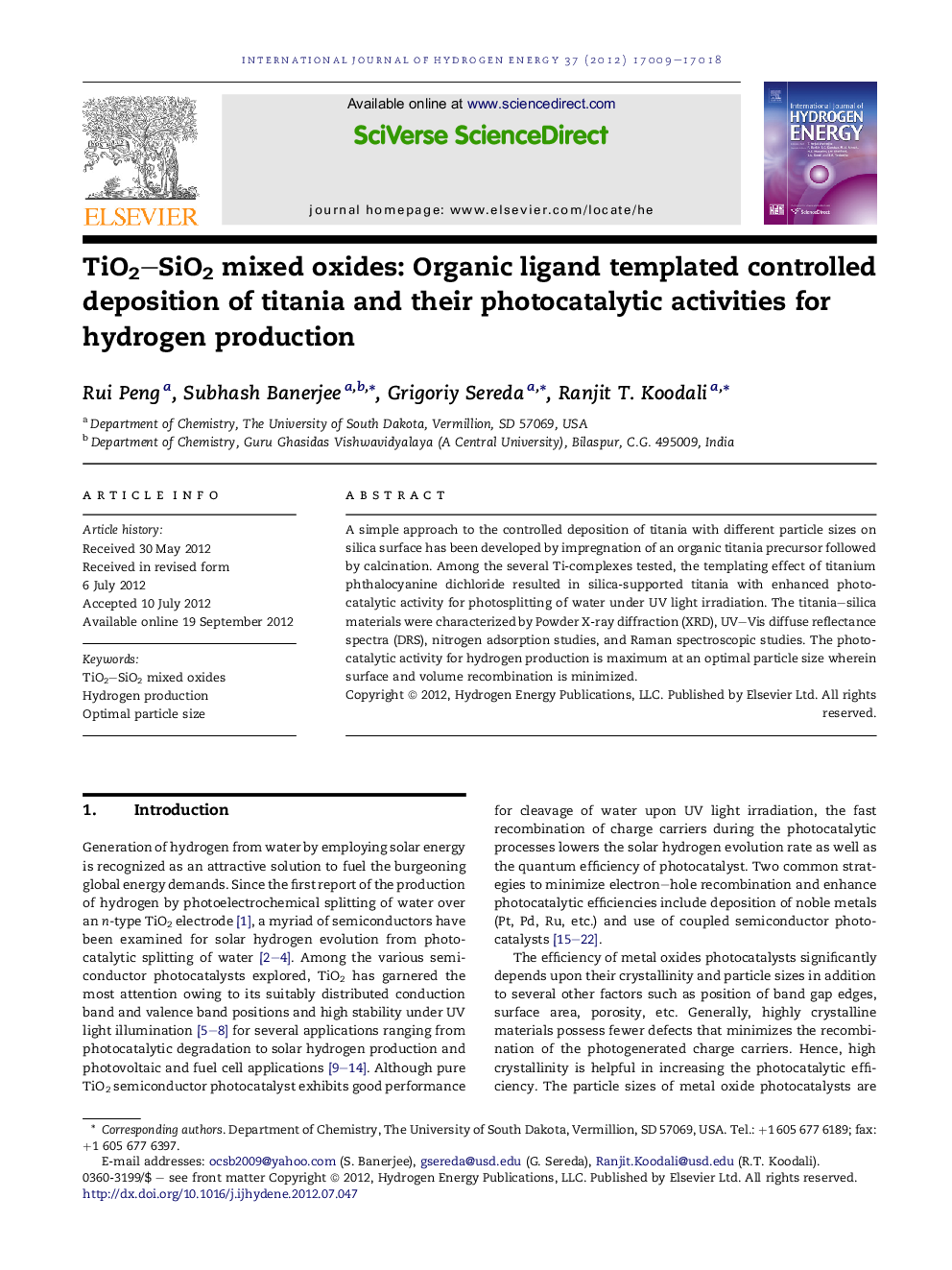| Article ID | Journal | Published Year | Pages | File Type |
|---|---|---|---|---|
| 1270883 | International Journal of Hydrogen Energy | 2012 | 10 Pages |
A simple approach to the controlled deposition of titania with different particle sizes on silica surface has been developed by impregnation of an organic titania precursor followed by calcination. Among the several Ti-complexes tested, the templating effect of titanium phthalocyanine dichloride resulted in silica-supported titania with enhanced photocatalytic activity for photosplitting of water under UV light irradiation. The titania–silica materials were characterized by Powder X-ray diffraction (XRD), UV–Vis diffuse reflectance spectra (DRS), nitrogen adsorption studies, and Raman spectroscopic studies. The photocatalytic activity for hydrogen production is maximum at an optimal particle size wherein surface and volume recombination is minimized.
► Four precursors were used to deposit titania on silica. ► Tetrahedral coordination of Ti4+ ions is important for hydrogen generation. ► Hydrogen production is highest at an optimal particle size of titania.
